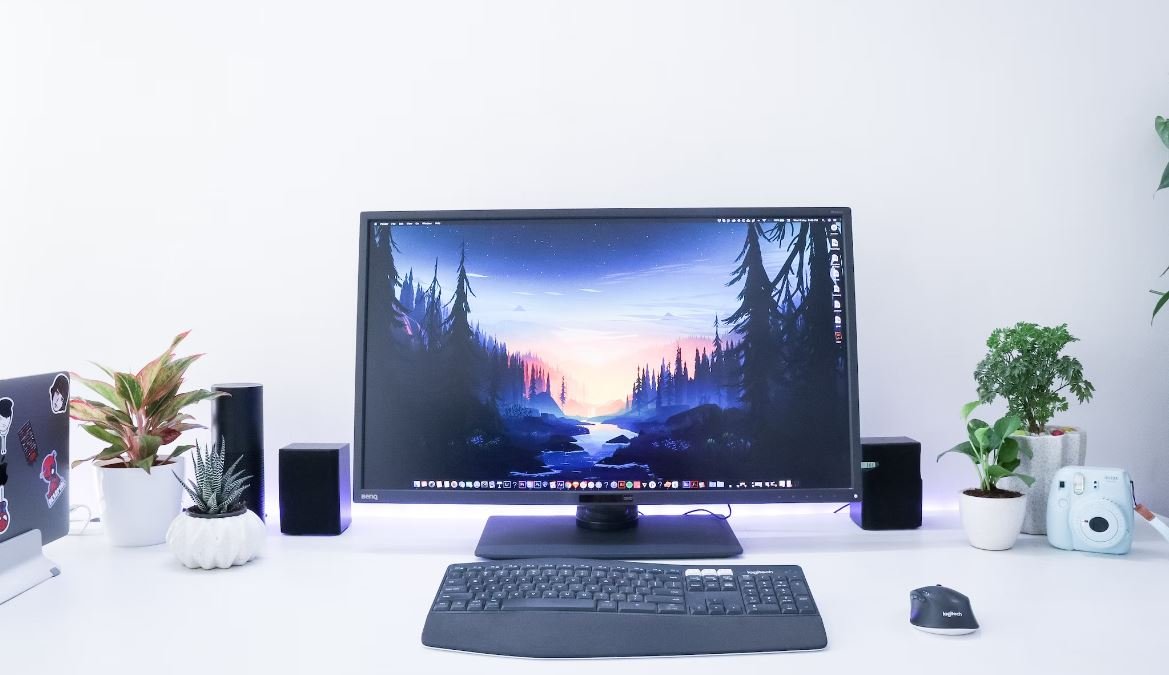Why Machine Learning Uses GPU
Machine learning has revolutionized industries by enabling computers to learn and make predictions without being explicitly programmed. As the complexity of machine learning algorithms has increased, so has the need for faster and more efficient computing systems. This is where the use of GPUs (Graphics Processing Units) comes into play.
Key Takeaways
- GPU acceleration significantly speeds up machine learning tasks.
- GPUs handle parallel processing of mathematical computations.
- Machine learning algorithms benefit from the high number of cores in GPUs.
- GPUs offer faster training and inference times, reducing overall computation time.
- The ability to use GPUs in cloud platforms enhances accessibility and scalability.
Traditional CPUs (Central Processing Units) are designed to handle a wide range of tasks, but they are not specifically optimized for machine learning. **GPUs, on the other hand, excel in parallel processing by efficiently handling thousands of tasks simultaneously**. GPUs consist of multiple cores that can process data in parallel, making them ideal for accelerating machine learning algorithms which often involve large datasets and complex mathematical computations.
When training a machine learning model, large amounts of data need to be processed, and the model must iteratively learn and update its parameters. **By leveraging the parallel processing power of GPUs, the training process can be significantly accelerated, leading to faster convergence and reduced training time**. This allows researchers and developers to experiment with different models, hyperparameters, and data variations more efficiently, ultimately enhancing the iterative process of model development.
In addition to training, GPUs also play a crucial role in the inference phase of machine learning. Once a model is trained, it needs to make predictions on new, unseen data quickly and accurately. **GPUs enable fast inference by executing mathematical operations in parallel across multiple cores**, resulting in reduced decision-making time. This is particularly beneficial for real-time applications like autonomous vehicles or fraud detection systems where prompt and accurate predictions are essential.
The Power of GPU Cores
One significant advantage GPUs have over CPUs is the sheer number of cores they possess. While CPUs typically have 4 to 32 cores, modern GPUs can have hundreds or even thousands of cores. **Having a higher number of cores enables GPUs to handle vast amounts of data more efficiently and perform multiple computations simultaneously**. This parallelism allows for faster processing of neural networks, decision trees, and other complex machine learning models.
Not only do GPUs offer a higher core count, but they also have more memory bandwidth compared to CPUs. **The ability to move data quickly between the GPU memory and the processor cores results in reduced latency and improved overall performance**. High memory bandwidth ensures that the GPU can efficiently handle the massive amounts of data required for machine learning tasks, further enhancing the speed and efficiency of the algorithms.
GPU Adoption in the Machine Learning Community
The use of GPUs in machine learning has gained significant traction in recent years. This can be attributed to multiple factors such as advancements in GPU architecture, availability of libraries and frameworks optimized for GPU usage, and the increasing demand for faster training and inference times. As a result, major machine learning frameworks like TensorFlow and PyTorch have integrated GPU support, enabling developers to harness the full power of GPUs for their machine learning tasks.
| CPU | GPU | |
|---|---|---|
| Core Count | 4-32 | 100s-1000s |
| Memory Bandwidth | Low | High |
| Parallel Processing | Limited | Efficient |
The increasing popularity of cloud computing has also contributed to the widespread adoption of GPUs in machine learning. Major cloud platforms such as Amazon Web Services (AWS), Microsoft Azure, and Google Cloud Platform (GCP) provide GPU instances that allow users to access and leverage powerful GPU resources for their machine learning workloads. This not only enhances accessibility but also enables scalability as users can easily scale up their GPU resources based on their computational needs.
In conclusion, the use of GPUs in machine learning has become indispensable due to their parallel processing capabilities, higher core counts, faster training and inference times, and increasing availability in cloud platforms. GPUs accelerate the entire machine learning workflow, from data preprocessing to model training and prediction, resulting in more efficient and effective machine learning systems.

Common Misconceptions
Paragraph 1: Machine Learning and GPU Usage
One common misconception about machine learning is that it does not require the use of GPUs. While it is true that some algorithms and models can run on CPUs, the use of GPUs has become increasingly prevalent in machine learning due to their ability to handle large amounts of data and perform complex parallel computations.
- Machine learning models benefit from GPU acceleration for faster training and inference.
- GPUs allow for efficient parallel processing of computations, which is highly beneficial in machine learning tasks.
- With GPU usage, machine learning algorithms can handle larger datasets and perform more complex computations in a reasonable amount of time.
Paragraph 2: GPUs vs CPUs in Machine Learning
Another misconception is that CPUs are just as effective as GPUs when it comes to machine learning tasks. While CPUs are capable of executing machine learning algorithms, they are not optimized for the highly parallel computations that are required by most machine learning models.
- GPUs are specifically designed to handle parallel tasks, making them much more efficient than CPUs in machine learning.
- Certain machine learning libraries and frameworks, such as TensorFlow and PyTorch, are optimized to take advantage of GPUs for accelerated computations.
- GPU usage can significantly reduce the training time of machine learning models compared to using only CPUs.
Paragraph 3: Cost and Accessibility of GPUs
A misconception is that GPUs are expensive and inaccessible for most machine learning enthusiasts. While high-end GPUs can indeed be costly, there are more affordable options available in the market. Additionally, cloud computing platforms offer GPU instances that can be rented on-demand, making them accessible to a wider audience.
- There are budget-friendly GPUs available that offer good performance for machine learning tasks.
- Cloud computing services like Amazon Web Services (AWS) and Google Cloud Platform (GCP) provide GPU instances that can be used for machine learning at a reasonable price.
- Using cloud-based GPU instances eliminates the need to purchase and maintain expensive hardware, making GPU-accelerated machine learning more accessible.
Paragraph 4: GPU Compatibility and Skill Requirements
It is often assumed that using GPUs in machine learning requires a great deal of technical expertise and compatibility issues. While there may be some hardware and software considerations, modern machine learning frameworks and libraries have made it easier to integrate GPU acceleration into the development process.
- Popular machine learning frameworks provide GPU support out of the box with easy-to-use APIs.
- Most deep learning libraries, such as TensorFlow and PyTorch, offer GPU compatibility for seamless integration.
- Using GPU acceleration in machine learning generally requires minimal changes to the codebase, making it accessible even to beginners.
Paragraph 5: GPUs and Real-World Applications
Finally, there is often a misconception that GPUs are unnecessary for real-world machine learning applications. However, in fields such as computer vision, natural language processing, and speech recognition, GPU acceleration can significantly improve the performance and speed of these applications.
- GPU acceleration is particularly beneficial for tasks that involve large-scale image and video processing, such as object detection and video analysis.
- Natural language processing tasks like text generation and machine translation can also benefit from GPU acceleration.
- Speech recognition systems, which require processing large amounts of audio data, can achieve faster results using GPUs.

Introduction
Machine learning has become an integral part of various industries, from healthcare to finance, as it enables computers to learn from data and make accurate predictions or decisions. One crucial component for efficient machine learning operations is the use of Graphics Processing Units (GPUs). GPUs provide immense processing power and parallelism, making them ideal for complex computations required in machine learning algorithms. In this article, we explore ten fascinating aspects that demonstrate why machine learning embraces the power of GPUs.
1. Faster Training Times
Training a machine learning model can be a time-consuming task, especially when working with vast amounts of data. However, GPUs dramatically speed up this process due to their parallel processing capabilities. By utilizing GPUs, machine learning models can be trained much faster, enabling researchers and practitioners to iterate and improve models swiftly.
2. Enhanced Performance
Machine learning algorithms often involve intricate calculations, such as matrix operations, that require substantial computational power. GPUs excel in these computations, thanks to their thousands of cores optimized for parallel processing. This enhanced performance enables faster and more accurate predictions, leading to superior machine learning models.
3. Handling Large Datasets
In the realm of machine learning, dealing with massive datasets is commonplace. GPUs offer large memory bandwidth, enabling efficient data loading and processing. This capability allows machine learning algorithms to manage extensive datasets without sacrificing performance or accuracy.
4. Deep Neural Networks
Deep learning, a powerful subset of machine learning, employs complex neural networks with multiple layers. GPUs prove indispensable in training and utilizing these deep neural networks due to their parallelism. The parallel architecture of GPUs allows for accelerated computations, thereby enabling the efficient training and inference of deep neural networks.
5. Real-time Processing
When it comes to real-time applications, such as self-driving cars or facial recognition systems, quick response times are crucial. GPUs provide the necessary computational power to process large amounts of data in real-time, ensuring timely decision-making and accurate results.
6. Model Optimization
To improve a machine learning model’s performance, practitioners often explore various optimization techniques. GPUs accelerate these optimization processes, allowing researchers to explore multiple model architectures and parameters efficiently. This accelerated optimization ultimately leads to more refined and accurate machine learning models.
7. Cost-effective Solutions
Despite the initial investment, utilizing GPUs for machine learning tasks can be more cost-effective in the long run. GPUs offer superior parallelism, enabling faster model training and inference times. This efficiency translates into reduced computational resources required for achieving the desired results, thus lowering operational costs.
8. Transfer Learning
Transfer learning leverages pre-trained models on one dataset to extract useful features for another related task, thereby reducing the need for significant amounts of labeled data. By using GPUs, the transfer learning process becomes more efficient, as the parallel processing capabilities allow for quicker adaptation of models to new tasks without sacrificing accuracy.
9. Scalability
Machine learning projects often require scaling up computational resources to handle growing datasets or more complex models. GPUs offer excellent scalability by utilizing parallel processing across multiple GPUs or scaling to cloud-based GPU resources. This scalability allows machine learning tasks to adapt to increasing demands efficiently.
10. Cutting-edge Research
The use of GPUs in machine learning has facilitated groundbreaking research in various fields. Researchers can harness the immense computational power offered by GPUs to push the boundaries of what is possible with machine learning. This has led to advancements in speech recognition, natural language processing, and computer vision, among other domains.
Conclusion
Machine learning’s utilization of GPUs has transformed the field, enabling researchers and practitioners to train models faster, process vast amounts of data, and achieve state-of-the-art results. GPUs provide the necessary computational power and parallelism required to handle complex calculations and optimize machine learning models effectively. As the demand for machine learning continues to grow, GPUs will remain an integral element in empowering groundbreaking advancements across numerous industries.
Frequently Asked Questions
Why is machine learning important?
Machine learning allows computers to learn and improve from experience without being explicitly programmed. It is important because it enables computers to analyze large amounts of data and make accurate predictions and decisions.
What is GPU?
A Graphics Processing Unit (GPU) is a specialized electronic circuit that performs high-speed mathematical calculations. It is designed to handle parallel tasks and is commonly used in machine learning to accelerate the training and inference processes.
Why does machine learning use GPUs?
Machine learning algorithms often involve complex mathematical calculations and require training on large datasets. GPUs excel in parallel processing, making them ideal for accelerating these computations and significantly reducing training times.
What are the benefits of using GPUs in machine learning?
Using GPUs in machine learning can result in faster model training and inference times, improved performance, and increased productivity. GPUs can handle massive amounts of data in parallel, allowing researchers and developers to iterate and test different models more efficiently.
Which GPU models are commonly used in machine learning?
Some popular GPU models used in machine learning include NVIDIA GeForce series (e.g., GTX and RTX), NVIDIA Tesla series, and AMD Radeon series. These GPUs are known for their powerful computational capabilities and support for deep learning frameworks.
Are GPUs necessary for machine learning?
No, GPUs are not necessary for machine learning, but they greatly enhance performance and speed up the training process. Without GPUs, machine learning models can still be trained and deployed using CPUs, but it may take significantly longer to achieve similar results.
Can any GPU be used for machine learning?
Not all GPUs are created equal when it comes to machine learning. To effectively leverage GPUs for machine learning, it is recommended to use GPUs with higher computational power, memory capacity, and CUDA (Compute Unified Device Architecture) support, which is a parallel computing platform and application programming interface.
How can I set up my machine for GPU-accelerated machine learning?
To set up your machine for GPU-accelerated machine learning, you need a compatible GPU, GPU drivers, and a deep learning framework such as TensorFlow or PyTorch. You also need to ensure that your machine meets the power and cooling requirements for running GPU-intensive tasks.
Are there any alternative hardware options for machine learning?
In addition to GPUs, other hardware options for machine learning include Field Programmable Gate Arrays (FPGAs) and Application-Specific Integrated Circuits (ASICs). These specialized hardware devices can offer even greater performance and energy efficiency for specific machine learning tasks.
Is it possible to use cloud-based GPU resources for machine learning?
Yes, many cloud service providers offer GPU instances that can be used for machine learning. Amazon Web Services (AWS), Google Cloud Platform (GCP), and Microsoft Azure are among the popular cloud platforms that provide access to GPU resources and pre-configured deep learning environments.




